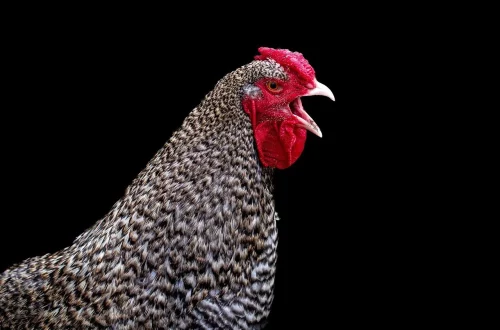
Understanding Great Pyrenees Shedding: Tips for Managing Fur Loss
The Great Pyrenees, known for its majestic appearance and gentle demeanor, is a popular choice for families and individuals seeking a loyal companion. However, with their thick, double coat comes a significant challenge: shedding. For many dog owners, managing fur loss can be a daunting task, especially during seasonal changes when shedding intensifies. Understanding the nature of shedding in Great Pyrenees is crucial for maintaining a clean home and ensuring the comfort of both the dog and its owners.
These dogs were originally bred as livestock guardians in the mountainous regions of Europe, which is why they possess a dense coat that protects them from harsh weather conditions. This thick fur is not just for show; it serves a functional purpose. However, it also means that owners must be prepared for the inevitable fur loss that occurs throughout the year. Shedding can vary based on factors such as climate, diet, and overall health, making it essential for owners to adopt effective management strategies.
In this article, we will explore various aspects of Great Pyrenees shedding, including the reasons behind it, the best grooming practices, and tips for minimizing the impact of fur loss in your home. By understanding these factors, you can create a comfortable environment for your Great Pyrenees while keeping shedding under control.
The Shedding Cycle of Great Pyrenees
Understanding the shedding cycle of the Great Pyrenees is the first step in effectively managing fur loss. Typically, these dogs experience two major shedding periods each year: spring and fall. During these times, they will lose their undercoat to adjust to the changing temperatures. This process is natural and necessary for their well-being.
In the spring, as temperatures rise, your Great Pyrenees will shed its heavy winter coat to allow for better cooling and comfort in warmer weather. Conversely, during the fall, they will grow a thicker coat to prepare for the colder months ahead. This seasonal shedding can be quite significant, leading to piles of fur around the house.
In addition to these seasonal patterns, other factors can influence shedding. For instance, stress, hormonal changes, and even diet can play a role in how much your dog sheds. A sudden increase in shedding may indicate an underlying health issue or a reaction to environmental changes, such as moving to a new home or experiencing a change in routine.
Recognizing the normal shedding patterns of your Great Pyrenees will help you better prepare for these periods. Regular grooming during shedding seasons can help manage the fur loss effectively. By brushing your dog multiple times a week, you can remove loose hair before it has a chance to scatter around your home. Additionally, maintaining a healthy diet rich in omega fatty acids can promote a healthy coat, potentially reducing excessive shedding.
Grooming Techniques for Great Pyrenees
Effective grooming is crucial for managing shedding in Great Pyrenees. With their thick, double coat, these dogs require regular brushing to keep their fur healthy and minimize loose hair in your home. The right grooming tools can make a significant difference in your efforts to manage shedding.
A slicker brush is one of the most effective tools for removing loose fur and preventing matting. It features fine, short wires close together, which can penetrate the dense coat and reach the undercoat. Regular use of a slicker brush will help to remove dead hair and dirt, reducing the amount of fur that ends up on your floors and furniture.
In addition to a slicker brush, a de-shedding tool can be extremely beneficial during peak shedding seasons. These tools are specifically designed to reach down to the undercoat and remove loose fur without damaging the outer coat. When using a de-shedding tool, be sure to follow the manufacturer’s instructions to avoid irritating your dog’s skin.
Bathing your Great Pyrenees can also play a role in managing shedding. While it’s important not to bathe your dog too frequently, as this can strip the coat of its natural oils, an occasional bath with a high-quality dog shampoo can help loosen dead hair. Be sure to thoroughly dry your dog after bathing, as a damp coat can lead to matting and tangles.
Finally, it’s essential to create a positive grooming experience for your Great Pyrenees. Regular grooming sessions should be seen as a bonding opportunity rather than a chore. Use treats and praise to reward your dog for their cooperation, making future grooming sessions easier and more enjoyable for both of you.
Home Management Strategies for Shedding
In addition to regular grooming, implementing effective home management strategies can help minimize the impact of shedding from your Great Pyrenees. Keeping your living space clean and fur-free requires a proactive approach and a few practical tips.
First, consider investing in high-quality vacuum cleaners designed for pet hair. These vacuums often come with specialized attachments that can tackle fur on various surfaces, including upholstery and carpets. Regular vacuuming can significantly reduce the amount of hair that accumulates in your home.
Another effective strategy is to establish designated areas for your Great Pyrenees. By providing a comfortable space where your dog can relax, such as a dog bed or blanket, you can help contain shedding to specific areas. Be sure to wash these items regularly to keep them free from fur and odors.
Using lint rollers or pet hair removers can also be helpful for quick clean-ups, especially on clothing and furniture. Keep these tools handy in high-traffic areas to make it easier to manage fur on the go.
Additionally, consider using air purifiers with HEPA filters in your home. These devices can help trap pet dander and hair, improving air quality and reducing allergens. This is especially beneficial for households with allergy sufferers.
Lastly, fostering a routine can make a significant difference in managing shedding. Regular grooming, cleaning, and maintenance will help you stay on top of fur loss and create a more comfortable living environment for both you and your Great Pyrenees.
Health Considerations Related to Shedding
While shedding is a natural part of owning a Great Pyrenees, it’s essential to monitor your dog’s overall health, as excessive or unusual shedding can indicate underlying health issues. Changes in shedding patterns, such as sudden increases or bald patches, should not be ignored.
Diet plays a crucial role in maintaining a healthy coat. Ensure your dog is receiving a balanced diet with essential nutrients, including fatty acids, vitamins, and minerals. Poor nutrition can lead to dry skin and excessive shedding. If you’re unsure about your dog’s diet, consult with a veterinarian to determine the best food options for your Great Pyrenees.
Additionally, stress can significantly impact shedding. Changes in routine, environmental factors, or even anxiety can lead to increased fur loss. If you notice that your dog seems stressed or anxious, consider implementing strategies to create a calmer environment, such as providing a safe space, offering toys, or practicing relaxation techniques.
Regular veterinary check-ups are vital to ensure your Great Pyrenees remains healthy. If you observe any concerning changes in shedding or coat condition, it’s essential to consult a veterinarian. They can help identify any health issues and provide recommendations for treatment.
In summary, while shedding is a natural occurrence for Great Pyrenees, it’s important to stay vigilant about your dog’s health. By maintaining a proper diet, managing stress, and scheduling regular veterinary visits, you can help ensure your dog remains healthy and happy.
**Disclaimer**: This article is for informational purposes only and does not constitute medical advice. For any health concerns regarding your pet, please consult with a qualified veterinarian.




